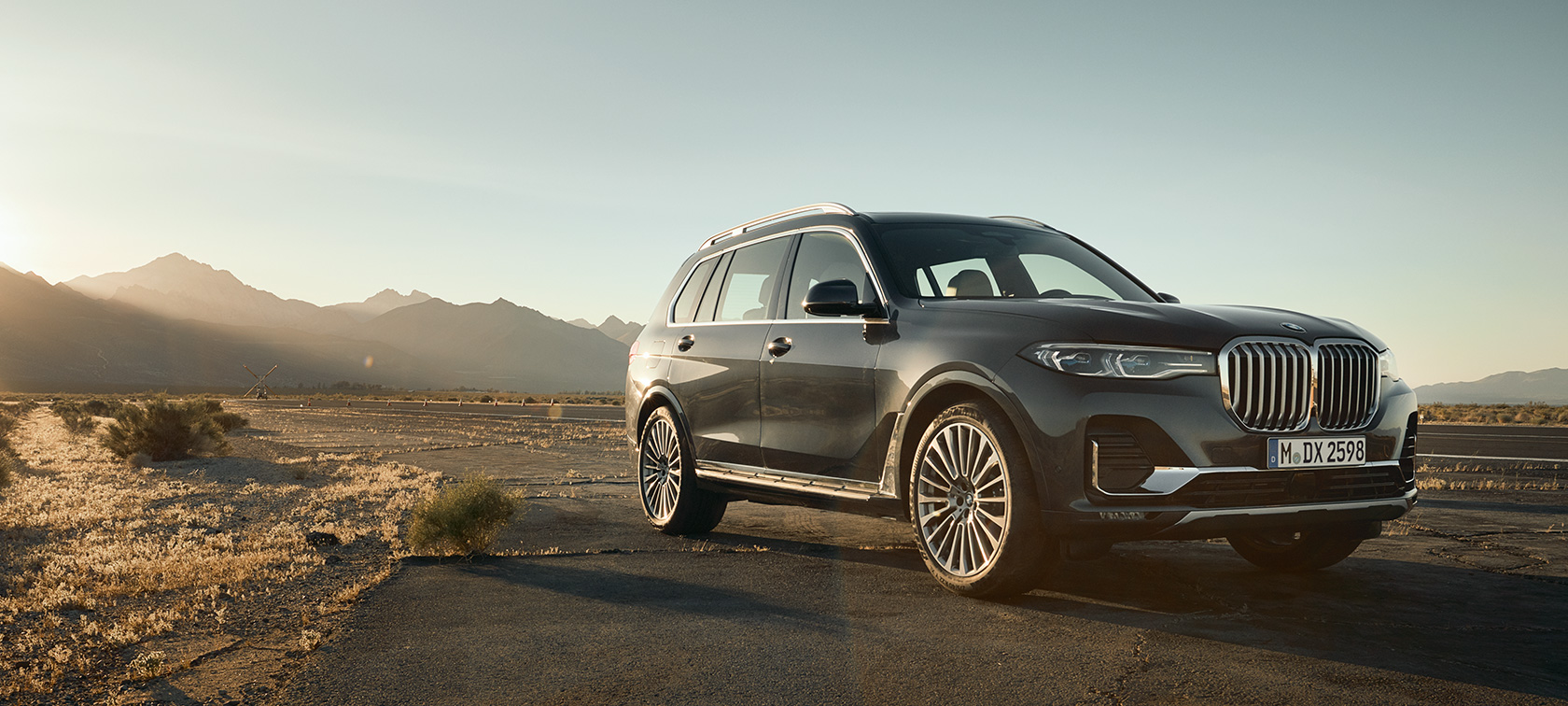Our tool for managing your permission to our use of cookies is temporarily offline. Therefore some functionality is missing.

THE X7
THE BMW X7 M AUTOMOBILES: ENGINES & TECHNICAL DATA
The key facts and figures on the BMW X7 M50i at a glance: engine, consumption, CO2 emissions and dimensions. Check out all the performance data such as displacement, horsepower, torque and acceleration.
TECHNICAL DATA OF THE BMW X7 M50i
- BMW X7 M50i
-
No search result found. Please try another input

| Unladen weight EU in kg | 2,490-2,480 |
|---|---|
| Max. permissible weight in kg | 3.295 |
| Permitted load in kg | 805-815 |
| Permitted axle load front/rear in kg | 1,460/1,930 |
| Luggage capacity min. (seats up or roof down) in l | 750 |
| Luggage capacity max. (seats down or roof up) in l | 1,050-2,120 |
| Trailer load (unbraked) in kg | 750 |
| Trailer load 8% (braked) in kg | 2,600-3,500 |
| Trailer load 12% (braked) in kg | 2,600-3,500 |
| Cylinders/valves | 8/4 |
|---|---|
| Capacity in ccm | 4,395 |
| Stroke/bore in mm | 88.3/89.0 |
| Engine power in kW (hp) at 1/min | 390 (530)/5,500-6,000 |
| Engine torque (Nm) at 1/min | 750/1,800-4,600 |
| Compression ratio : 1 | 10.5 |
| Top speed in km/h | 250 |
|---|---|
| Acceleration 0–100 km/h in s | 4.7 |
| Urban in l/100 km | 15.4 |
|---|---|
| Extra-urban in l/100 km | 9.6 |
| Combined in l/100 km | 11.7 |
| CO2 combined emissions in g/km | 268 |
| Tank capacity, approx. in l | 83 |
| Tyre dimensions front | 285/45 R21 113 Y XL |
|---|---|
| Tyre dimensions rear | 285/45 R21 113 Y XL |
| Wheel dimensions and material front | 9.5 J x 21 inches, light-alloy |
| Wheel dimensions and material rear | 9.5 J x 21 inches, light-alloy |
Fuel consumption and CO2 emissions of the BMW X7 M Automobiles.
BMW X7 M50d:
Fuel consumption in l/100 km (combined): xx.xx–xx.xx
CO2 emissions in g/km (combined): xxx–xxx
BMW X7 M50i:
Fuel consumption in l/100 km (combined): 12.8–12.3
CO2 emissions in g/km (combined): 292–280
The values of fuel consumptions, CO2 emissions and energy consumptions shown were determined according to the European Regulation (EC) 715/2007 in the version applicable at the time of type approval. The figures refer to a vehicle with basic configuration in Germany and the range shown considers optional equipment and the different size of wheels and tires available on the selected model.
The CO2 efficiency specifications are determined according to Directive 1999/94/EC and the European Regulation in its current version applicable. The values shown are based on the fuel consumption, CO2 values and energy consumptions according to the NEDC cycle for the classification.
For further information about the official fuel consumption and the specific CO2 emission of new passenger cars can be taken out of the “handbook of fuel consumption, the CO2 emission and power consumption of new passenger cars”, which is available at all selling points and at https://www.dat.de/angebote/verlagsprodukte/leitfaden-kraftstoffverbrauch.html
Fuel consumption and CO2 emissions of the BMW X7 M Automobiles.
-
BMW X7 M50i:
Fuel consumption in l/100 km (combined): 11.7
CO2 emissions in g/km (combined): 268
The values of fuel consumptions, CO2 emissions and energy consumptions shown were determined according to the European Regulation (EC) 715/2007 in the version applicable at the time of type approval. The figures refer to a vehicle with basic configuration in Germany and the range shown considers optional equipment and the different size of wheels and tires available on the selected model.
The CO2 efficiency specifications are determined according to Directive 1999/94/EC and the European Regulation in its current version applicable. The values shown are based on the fuel consumption, CO2 values and energy consumptions according to the NEDC cycle for the classification.
For further information about the official fuel consumption and the specific CO2 emission of new passenger cars can be taken out of the “handbook of fuel consumption, the CO2 emission and power consumption of new passenger cars”, which is available at all selling points and at https://www.dat.de/angebote/verlagsprodukte/leitfaden-kraftstoffverbrauch.html